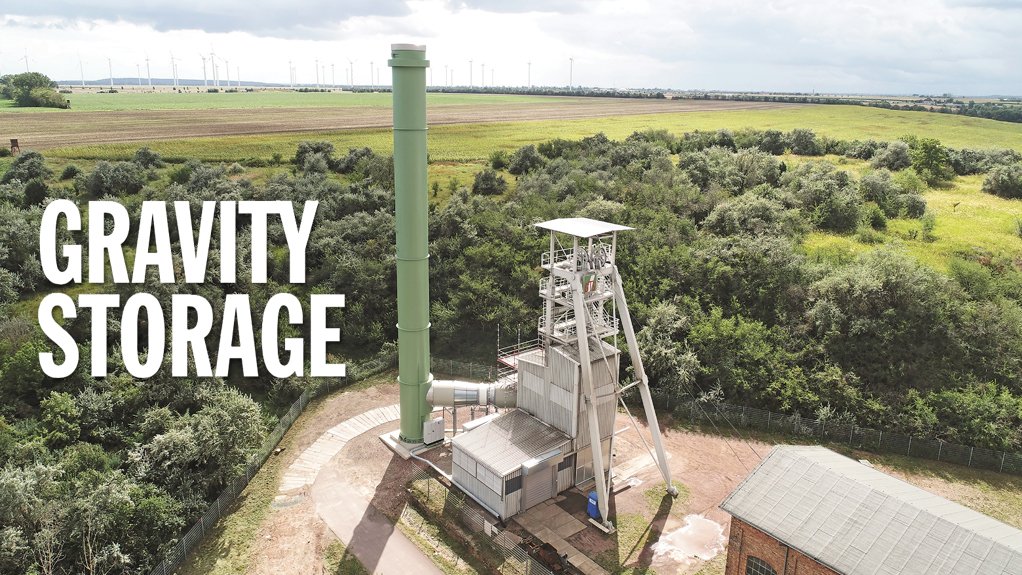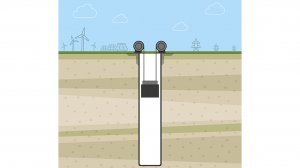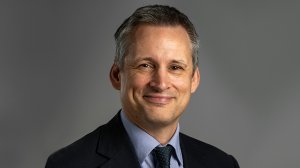SA’s deep-level mines could hold big gravity energy storage potential




DEVOLVING STATE RAIL The City of Cape Town is working to prove the viability and business case of it running an independent passenger rail service
Gravitricity commercial director Robin Lane
Although gravity-based energy storage (GES) as a technology is still in its infancy globally, stakeholders from industry and academia have highlighted its potential in the South African mining industry.
Gravity-based systems are being investigated worldwide as an option for the long-term storage of renewable energy, typically using the hydraulic lifting of large rock mass.
GES serves as an alternative to other energy storage technologies, such as lithium-ion batteries, and provides a superior levelised cost of storage and a longer life cycle with no output degradation, as well as fewer global supply chain issues.
Gravitricity, which is based in Edinburgh, in the UK, and is among the first movers in GES development, is working with Dutch winch and offshore manufacturer Huisman Equipment to develop a prototype system, and with Czech Republic-based Nano Energies to establish commercial routes to market for GES.
To this end, Gravitricity has signed a memorandum of understanding with Czech State-owned mining enterprise Diamo to transform the former Darkov deep-level coal mine in the country into a 4 MW energy storage facility by lowering and raising a single massive weight suspended in the mine shaft.
The company built a pilot system in 2021 in Scotland, which has demonstrated that Gravitricity’s GES technology can respond to grid fluctuations quickly and flexibly in terms of megawatt volume.
Gravitricity commercial director Robin Lane tells Engineering News & Mining Weekly that this technology can cycle rapidly from charge to discharge over many years, without any loss of performance, unlike many other energy storage technologies.
The company aims for the Darkov project to become a commercial blueprint for the financing and roll-out of future GES projects in Europe and, ultimately, in markets such as South Africa.
Gravitricity received a £300 000 grant from Innovate UK’s Energy Catalyst programme in April 2020 to explore South Africa’s mine storage potential; however, Lane says the right approvals and partnerships could not be finalised at the time and the company decided to refocus on its first full-scale plant built closer to home.
Meanwhile, German mine owner Geiger Group contracted Gravitricity to investigate the potential of storing energy at a decommissioned potash mine in Germany.
The group is using the 760-m-deep mine as a long-term waste disposal facility and aims to use green energy to power existing operations at the site and optimise electricity supply through GES.
Lane states there is vast potential for GES in South Africa not only as an energy storage alternative to current solutions but also a means of using decommissioned mine shafts beyond their useful lives, instead of having to break down infrastructure and rehabilitate the area.
He estimates that about 14 000 mines globally could be suitable for GES.
Research provider BloombergNEF has estimated that buoyant energy storage demand will require $262-billion worth of investment in various storage technologies by 2030.
Lane envisages that GES systems can be used by mines as an alternative to filling up the shafts and storing power for use at other operations, or as an additional source of revenue by selling power through the grid.
South Africa can mitigate its electricity challenges through using GES because it can store excess electricity from renewable- energy sources while there is low demand, and discharge electricity at times of higher demand.
“GES is able to provide megawatt hours back into the grid or supply industrial users with electricity. It can reduce the stress on the energy demand system,” he states.
Lane says one mine can potentially store up to 20 MWh.
The European Commission is supporting the deployment of renewable-energy storage projects in the Czech Republic and other European countries, and Gravitricity believes there is an opportunity to tap into this innovation funding to regenerate coal mines that are closing down, whereas in South Africa mining companies are faced with land reclamation and remediation costs.
Further, there are many decommissioned mines in South Africa that need to be used in other ways, lest they become an environmental and economic risk, and of particular interest to Gravitricity are the country’s renowned deep-level mines.
“[We] see it as a potential renewable superpower market,” he says, adding that, in South Africa, with its large population, and vast wind and solar resources, there will be demand for significant amounts of energy storage.
However, before Gravitricity can partner with mining companies in South Africa, it has to validate the capabilities and performance metrics of its technology through the scaled-up system in Czech Republic.
The company also aims to investigate a multiweight system, which involves dropping a weight down a shaft and picking up another simultaneously.
Through this full-scale project, Gravitricity hopes to bring down costs and take to market a commercially viable alternative to lithium-ion battery and pumped hydro energy storage.
Application Considerations
To compare different types of energy storage, Stellenbosch University GES PhD student Morris Mugyema explains that the application needs to be considered.
“For example, for an energy arbitrage application, whereby more electricity is purchased during off-peak periods for discharging and selling during peak periods, a system that can store energy for long periods effectively is necessary, such as pumped hydro storage, compared with batteries, which self-discharge over longer periods.”
In the case of a GES system that uses linear electric machines to vertically move multiple solid masses to store and discharge energy, Mugyema cites the ideal applications as frequency regulation and voltage support.
The linear electric machine GES system can make use of decommissioned mines or towers where cranes are used to lower and raise large masses. The linear electric machine GES system can also be used on inclined mountains moving rail cars.
Decommissioned mines can ensure a lower total cost of ownership, owing to the saving of excavation costs.
Linear electric machine GES systems do not need available water, nor do they depend on any location. They are, therefore, more geographically flexible than other energy storage technologies.
Mugyema explains that linear electric machines produce a linear force along their length, without rotating or producing torque as conventional motors do. They consist of a piston, a shaft, a translator, a primary mover and a power converter.
GES systems are suitable for integrating with renewable-energy sources, especially wind and solar, as such systems can help solve the inherent intermittency issues.
Mugyema adds that local mining companies could buy power during off-peak times at lower prices for use in other operations: “This way, cost efficiency can be achieved, which is top of mind for mining companies, and excess power can be sold.”
As GES is undergoing extensive research and development, Mugyema says the initial investment cost would be high; however, the current $132/MWh to $183/MWh levelised cost of storage, from the cost of design to operation, compared with other storage technologies, proves cost competitive.
GES uptake in South Africa could help to alleviate the energy crisis, but the enabling of more renewable-energy generation is necessary first, as “you need energy to be able to store it”, he points out.
Mugyema believes that, once the technology matures and has demonstrable benefits for mining companies, many companies with decommissioned mine shafts will want to investigate the opportunity to store energy.
He is working on a small, 5-m-high system as a prototype, which, if scaled up successfully, can serve as a starting point for mines to consider trialling GES.
Sizana Solutions CEO Les Lange highlights another application where GES technology such as that of NYSE-listed Energy Vault can be used: at Eskom’s coal-fired power stations that are due for decommissioning.
Energy Vault’s technology encompasses 30 t mobile masses being elevated to the top of a 120 m to 140 m building to charge, before being lowered to discharge the stored energy at the desired time.
He explains the GES structure can sequester ash and waste materials, with ash being an imminent environmental liability Eskom will have to deal with. In turn, the power station structures to be demolished can be reworked into GES systems, which means they will not become redundant or end up as waste to dispose.
These systems can store electricity from 4 to 16 hours.
Of course, Lange adds, the national grid can also benefit from additional energy storage in areas with limited grid evacuation capacity where renewable energy is generated, thereby improving grid stability and ancillary services.
Similarly, industrial operations, metros and municipalities can use GES structures to not only store energy but sequester construction or mine waste.
Article Enquiry
Email Article
Save Article
Feedback
To advertise email advertising@creamermedia.co.za or click here
Comments
Press Office
Announcements
What's On
Subscribe to improve your user experience...
Option 1 (equivalent of R125 a month):
Receive a weekly copy of Creamer Media's Engineering News & Mining Weekly magazine
(print copy for those in South Africa and e-magazine for those outside of South Africa)
Receive daily email newsletters
Access to full search results
Access archive of magazine back copies
Access to Projects in Progress
Access to ONE Research Report of your choice in PDF format
Option 2 (equivalent of R375 a month):
All benefits from Option 1
PLUS
Access to Creamer Media's Research Channel Africa for ALL Research Reports, in PDF format, on various industrial and mining sectors
including Electricity; Water; Energy Transition; Hydrogen; Roads, Rail and Ports; Coal; Gold; Platinum; Battery Metals; etc.
Already a subscriber?
Forgotten your password?
Receive weekly copy of Creamer Media's Engineering News & Mining Weekly magazine (print copy for those in South Africa and e-magazine for those outside of South Africa)
➕
Recieve daily email newsletters
➕
Access to full search results
➕
Access archive of magazine back copies
➕
Access to Projects in Progress
➕
Access to ONE Research Report of your choice in PDF format
RESEARCH CHANNEL AFRICA
R4500 (equivalent of R375 a month)
SUBSCRIBEAll benefits from Option 1
➕
Access to Creamer Media's Research Channel Africa for ALL Research Reports on various industrial and mining sectors, in PDF format, including on:
Electricity
➕
Water
➕
Energy Transition
➕
Hydrogen
➕
Roads, Rail and Ports
➕
Coal
➕
Gold
➕
Platinum
➕
Battery Metals
➕
etc.
Receive all benefits from Option 1 or Option 2 delivered to numerous people at your company
➕
Multiple User names and Passwords for simultaneous log-ins
➕
Intranet integration access to all in your organisation

















